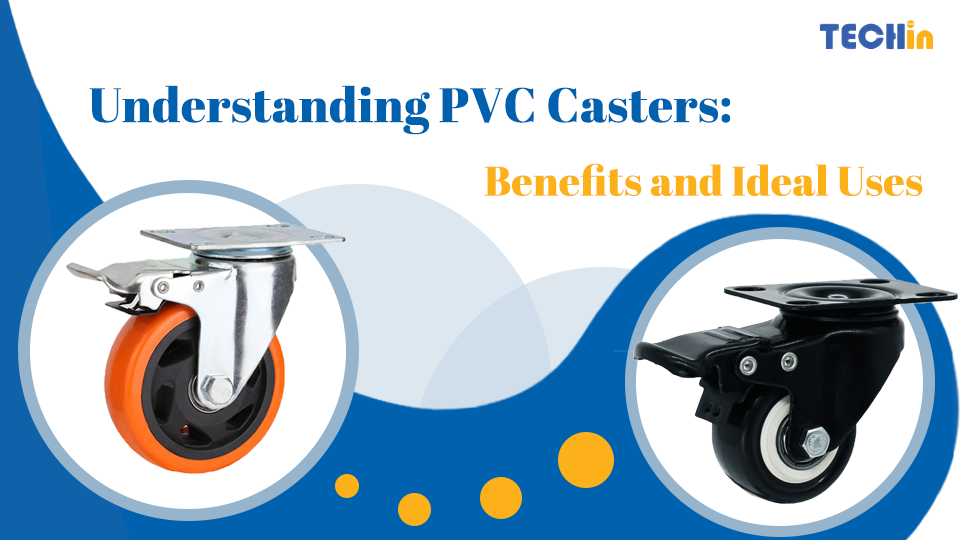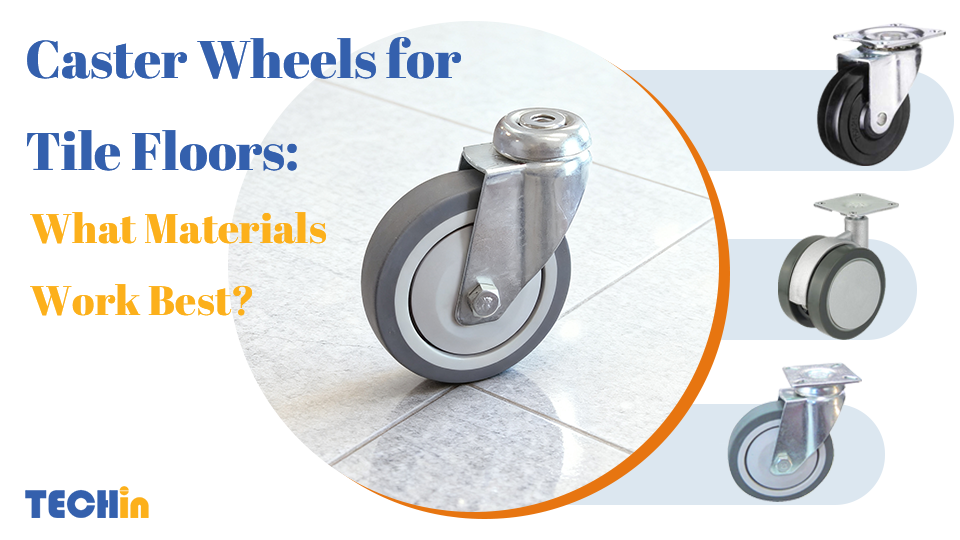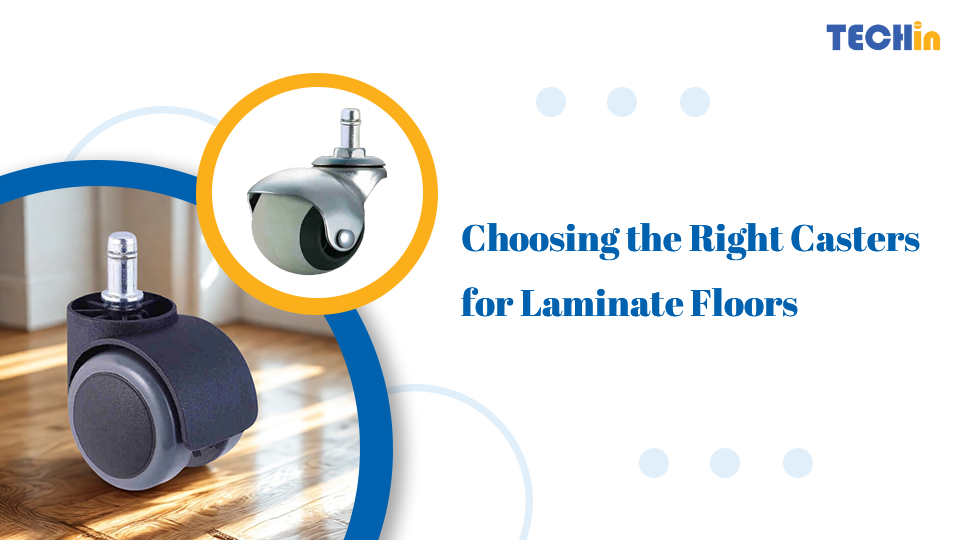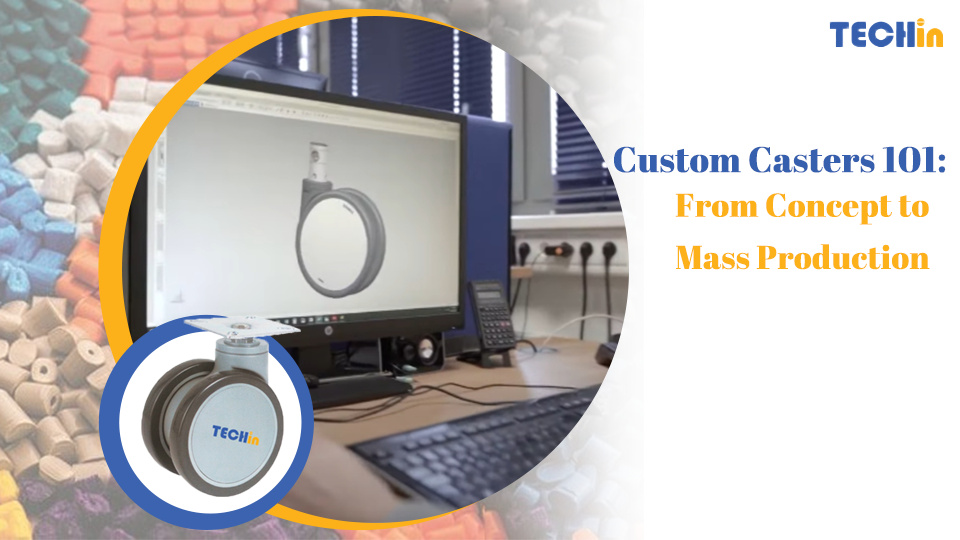Introduction
From supermarket carts to industrial machinery, caster wheels are a fundamental component of modern operations. But making the right choice in wheel material is more critical than many realize—the wrong one can lead to poor performance, equipment damage, and unnecessary costs. This is where Polyvinyl Chloride (PVC) casters come in. While often overlooked, they offer a strategic blend of affordability, durability, and chemical resistance that makes them a smart choice for savvy procurement managers and buyers.
Polyvinyl Chloride (PVC) casters are lightweight, cost-effective wheels designed for light-duty applications. Their key strength lies in their excellent resistance to chemicals like acids, alkalis, and alcohols, making them ideal for many industrial and commercial settings. They are also durable, gentle on floors, and corrosion-resistant—a perfect fit for environments where affordability, easy maintenance, and mass production are important factors.
Now that we have the basics covered, let’s explore their key advantages, common applications, and how they compare to other materials like polyurethane and rubber.
What are Polyvinyl Chloride Casters?
Polyvinyl Chloride (PVC) casters are wheels engineered from a versatile thermoplastic polymer, valued for its light weight and chemical resistance. Unlike heavy-duty polyurethane or rubber wheels, PVC casters are primarily intended for light- to medium-duty environments where frequent movement and potential chemical exposure are part of the daily routine.
PVC casters are typically available with several options:
- Swivel and fixed types to meet different maneuverability needs.
- Various load capacities, usually supporting between 40–120 kg per wheel.
- Floor-safe designs engineered to reduce marking or scratching on smooth surfaces.
They have become a preferred solution for industries that require affordable yet reliable wheel solutions without compromising on essential performance.
What are the Advantages of PVC Casters?
When evaluating your options, you’ll find PVC casters offer several distinct advantages, particularly for large-scale procurement.
- Cost-Effectiveness – Compared to polyurethane or rubber, PVC is less expensive to manufacture, making it a highly attractive option for bulk orders.
- Chemical Resistance – They perform exceptionally well against acids, alkalis, solvents, and alcohols, a crucial feature for labs, hospitals, and chemical facilities.
- Lightweight Design – Their lower weight simplifies installation, handling, and replacement, especially in large-scale applications.
- Floor Protection – The PVC material is designed to be gentle, reducing the risk of scratches and marks on smooth interior floors.
- Corrosion Resistance – Unlike metal alternatives that can rust, PVC casters maintain their integrity in humid or chemically exposed areas.
- Low Maintenance – They require minimal upkeep, as they are easy to clean and do not need frequent lubrication.
For buyers managing bulk orders, these benefits make PVC casters a practical and highly economical choice.
Where are PVC Caster Wheels Commonly Used?
The versatility of PVC casters makes them suitable for light-duty applications across a variety of sectors:
- Retail and supermarkets – For trolleys, display racks, and other lightweight equipment.
- Medical environments – On hospital beds, diagnostic equipment, and carts where chemical resistance is a priority.
- Chemical labs – A safe choice for equipment that may be exposed to acid or solvent spills.
- Warehousing and logistics – Ideal for small carts and bins used for moving goods on smooth floors.
- Household applications – Commonly found on furniture, utility carts, and DIY equipment.
In any setting where cost-efficiency, floor safety, and easy maneuverability take precedence over heavy load capacity, PVC casters are often the optimal choice.
Are PVC Casters Better than Polyurethane Casters?
Choosing between PVC and polyurethane caster wheels comes down to your specific application needs. Here’s a direct comparison:
- PVC casters:
- More affordable and lighter in weight.
- Excellent chemical resistance.
- Best for light-duty, indoor use.
- Polyurethane casters:
- More durable and capable of bearing heavier loads.
- Offer better shock absorption for a quieter roll.
- Suited for heavy-duty or outdoor use.
👉 Verdict: For budget-conscious indoor solutions, PVC is an excellent choice. However, for demanding loads and outdoor projects, polyurethane offers superior durability and performance.
How do PVC Casters Compare with Rubber Wheels?
Similarly, the comparison between PVC and rubber wheels hinges on the operating environment.
- PVC wheels vs rubber wheels:
- PVC: Lightweight, durable against chemicals, non-marking, and lower in cost.
- Rubber: Provides a softer ride, absorbs more shock, and handles uneven flooring better.
Rubber casters are the ideal solution for rough or uneven surfaces where shock absorption is important, while PVC casters excel in smooth indoor settings like hospitals, supermarkets, or factories.
This distinction helps procurement managers align their choice with the specific floor conditions and operational demands they face.
What Should You Consider When Choosing PVC Wheel Casters?
To ensure you select the right PVC caster, consider these key factors before placing an order:
- Load Capacity – Confirm the caster’s capacity meets your expected weight (PVC casters are designed for light-duty loads).
- Floor Type – PVC is best suited for smooth, delicate floors and is less effective on rough terrain.
- Chemical Exposure – Ideal for environments where acids, alkalis, or solvents are present.
- Temperature Resistance – Note that PVC is designed for moderate temperature ranges and is not suited for extreme heat or freezing.
- Wheel Size and Bearings – Larger wheels or those with polyurethane wheels with bearings can improve rolling efficiency for certain tasks.
- Frequency of Use – For equipment in constant, high-frequency use, a more durable material like polyurethane or rubber may be a better long-term investment.
Aligning these specifications with your operational needs is the key to preventing costly purchasing mistakes.
Maintenance Tips for PVC Casters
While PVC casters are known for being low-maintenance, these simple practices will help extend their service life:
- Regular Cleaning – Wipe wheels to prevent the buildup of dust and chemical residue.
- Check Bearings – Ensure they rotate smoothly; replace any that are noisy or stiff.
- Inspect for Cracks – PVC can wear under stress, so replace cracked casters immediately for safety.
- Lubricate Swivel Joints – This keeps maneuverability easy and prevents squeaking.
- Avoid Overloading – Adhering to weight limits is crucial for caster longevity and operational safety.
These steps will ensure your PVC casters remain functional and safe over time.
Conclusion
In summary, PVC casters represent an affordable, durable, and versatile solution for many industries. From hospitals to supermarkets, they deliver reliable chemical resistance, floor safety, and easy maintenance. Choosing the right caster always involves weighing load, environment, and budget. With proper selection and care, PVC casters can be a smart, long-term investment for your operations.
👉 Have you used PVC casters in your projects? Share your experience below—we’d love to hear how they performed in your industry!









